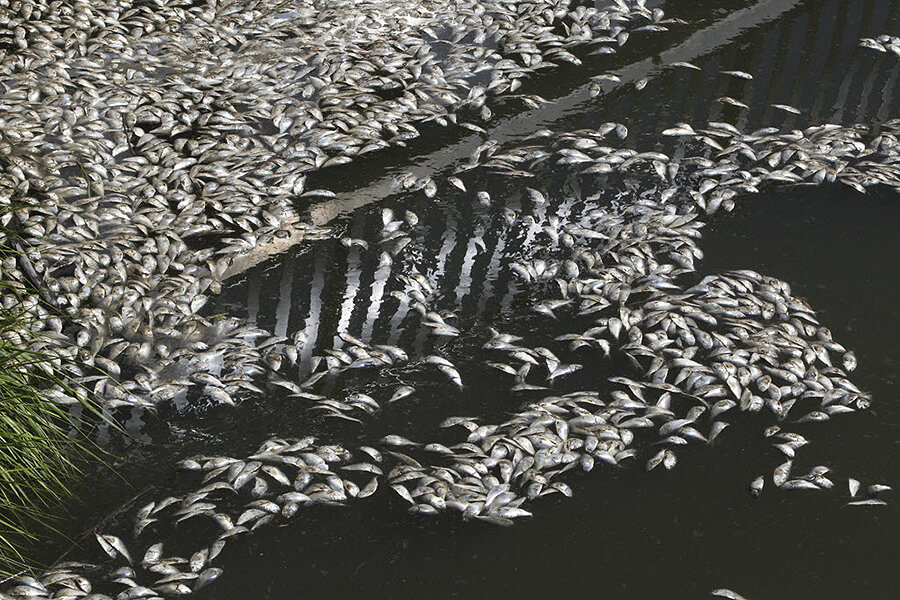Why are thousands of dead fish floating in a New York canal?
Loading...
Long Island residents found themselves in a stinky situation on Monday morning, after thousands of dead fish mysteriously surfaced in a local canal.
The fish belong to a type of fish called menhaden, or bunker fish, which are commonly eaten by larger Atlantic fish such as bluefish. Officials say that in this instance, the bunker fish were most likely herded into the little canal by larger predators, and suffocated there due to lack of oxygen.
"Unbelievable scene – tons and tons of bunker starving for oxygen," said nearby resident Dennis Demarco in a video he took of the schooling, dying fish. "Even the locals have not seen anything like this before."
Massive die-offs, like the one that took place in New York’s Shinnecock Canal this week, happen occasionally. Yet for locals, the site was unusual – and unpleasant.
"They're all dead up on the beach, in the water, behind the building," said one shocked local, Ken Reney.
At first, some residents thought that the silvery gray surface was from ice or frost on the water of the canal, before they realized that it was thousands upon thousands of dead fish.
Local Department of Environmental Conservation officials say that many of the fish have now sunk to the bottom of the canal, while some remain on the top of the water. Still others have become dinner for local birds.
It may look alarming, but many environmental experts say that despite the gruesome appearance of the event, there is nothing to worry about.
Earlier this year, a similar mass die-off in nearby New Jersey concerned residents, although just like in this case, officials told locals not to worry.
"It's nature being nature," New Jersey Department of Environmental Protection spokesperson Lawrence Hanja told the Monitor. "These events have happened over the centuries and will continue to happen. It's just part of how nature works and the ecosystem maintains equilibrium."
Other recent die-offs in Minnesota and California were likely the result of excessive snowfall and a heat wave, respectively.
Others, however, say that while oxygen deprivation is not in itself a cause for alarm, there are contributing factors to low oxygen levels that might be disconcerting.
Warmer waters, for example, hold oxygen less well than colder waters, and if the world's oceans are warming, it's possible we could see more incidents like these in future years.
Some scientists also say that if an ecosystem is struggling with other problems, such as high levels of nitrogen in waterways, then it can also contribute to fish die-offs.
Still, in this incident, officials are fairly sure as to the cause.
"There was a big school of bluefish in the bay earlier on Sunday," said Stony Brook Southampton Marine Science Center manager Chris Paparo, according to CBS New York. "Bluefish eat bunker and they chase the bunker into the canal like this and the locks are closed, fish can't escape, and when they get pushed in they deplete the oxygen."








